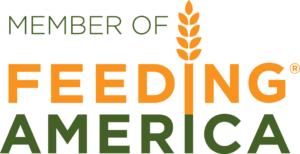In a three part blog series, we examine Western Washington’s hunger safety net, which is made up of food banks and meal programs throughout the state as well as government funded programs like SNAP, school meals, WIC, and programs for seniors. With Food Lifeline’s Missing Meals report, we are able to get a comprehensive look at how the safety net meets the needs of hungry Washingtonians, while also taking into account how much work is still left to do.
As in prior years the Supplemental Nutrition Assistance Program (SNAP, formerly food stamps) is the greatest single source of meals. It made up 66%, or almost 370 million meals in the safety net. The next highest was food banks and meal programs at 16% or close to 78 million meals. The remaining 101 million meals were provided through other government programs. The largest single government program after SNAP is the free and reduced price school meal program which provided almost 72 million meals. The Special Supplemental Nutrition Program for Women, Infants and Children (WIC) provided an additional 25 million meals for children under five, and pregnant and nursing women. The remaining four million meals came from a combination of smaller programs including those serving seniors like Meals on Wheels and some other children’s programs like summer meals.






